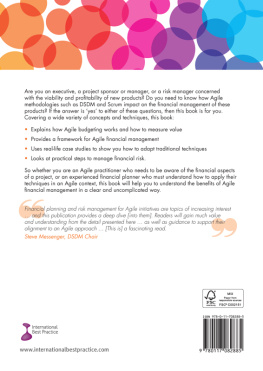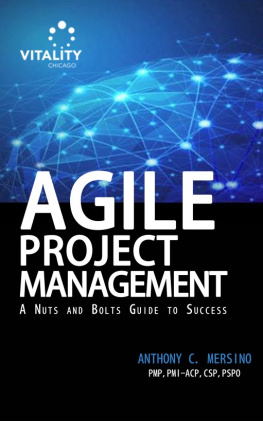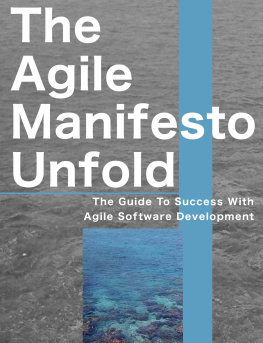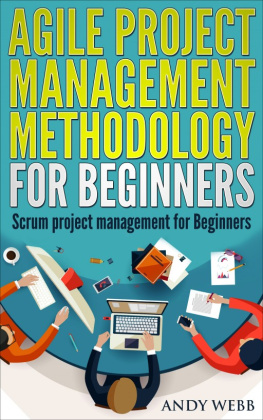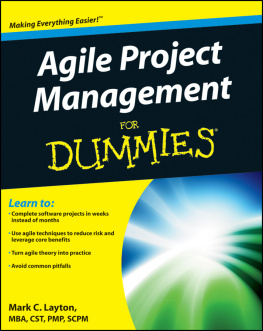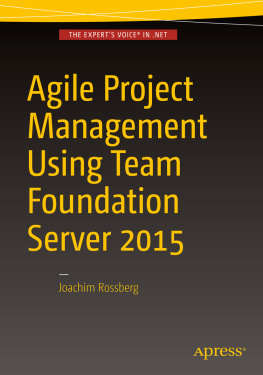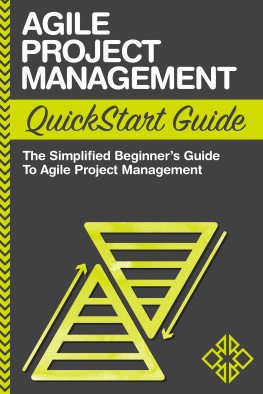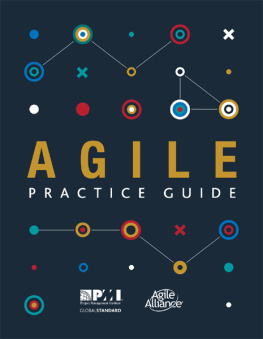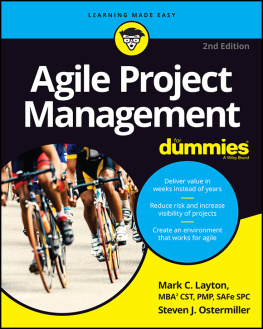
Valuing Agile
The Financial Management of Agile Projects
London: TSO

Published by TSO (The Stationery Office), part of Williams Lea, and available from:
Online
www.internationalbestpractice.com
www.tsoshop.co.uk
Mail, Telephone, Fax & E-mail
TSO
PO Box 29, Norwich, NR3 1GN
Telephone orders/General enquiries: 0333 202 5070
Fax orders: 0333 202 5080
E-mail:
Textphone 0333 202 5077
TSO@Blackwell and other Accredited Agents
International Best Practice (IBP) is a framework-neutral, independent imprint of TSO. We source, create and publish guidance which improves business processes and efficiency. We deliver an ever-expanding range of best-practice guidance and frameworks to a global audience.
The Stationery Office 2016
All rights reserved. No part of this publication may be reproduced, stored in a retrieval system, or transmitted in any form or by any means, electronic, mechanical, photocopying, recording or otherwise without the permission of the publisher.
Applications for reproduction should be made in writing to The Stationery Office Limited, St Crispins, Duke Street, Norwich NR3 1PD.
The information contained in this publication is believed to be correct at the time of manufacture. Whilst care has been taken to ensure that the information is accurate, the publisher can accept no responsibility for any errors or omissions or for changes to the details given.
ITIL is a registered trade mark of AXELOS Limited.
PRINCE2 is a registered trade mark of AXELOS Limited.
PRINCE2 Agile is a registered trade mark of AXELOS Limited.
RESILIA is a trade mark of AXELOS Limited.
A CIP catalogue record for this book is available from the British Library.
A Library of Congress CIP catalogue record has been applied for.
First published 2016
ISBN 9780117082885
P002776710 03/16
List of figures
List of tables
About this guide
Whos it for?
This publication addresses the needs of both Agile practitioners and financial managers. It is suitable for business sponsors and executives (including product owners), Agile project managers, Scrum masters, team leaders, project management office staff and anyone else with an interest in the financial impact of Agile projects. By reading and understanding the chapters that follow, you will be better able to articulate the benefits of Agile in clear and uncomplicated language.
Why do you need it?
With the rise of interest in Agile projects, their financial management is becoming increasingly important. If you are responsible for the success of your Agile projects, then you will need to have a solid understanding of how to manage your finances! This book provides practical guidance on Agile requirements and financial and risk management, covering topics such as Agile contracting and budgeting while showing you how to cope with the impact of change and uncertainty on your project finances.
Whos it by?
Alan Moran

Alan Moran is an Agile thought leader and IT management professional with extensive senior-level experience of implementing and managing high-value IT and business solutions in public and private-sector organizations. An MBA graduate of the University of Strathclyde, he is also a doctorate holder in mathematics and has earned numerous certifications in Agile, project and risk management, IT service management and related disciplines. He is the managing director of the Institute for Agile Risk Management (IARM), a Swiss-based institution that exists to promote the principles and practices of Agile management within the context of the Agile enterprise. He is also the author of several publications, including Agile Risk Management (2014), Managing Agile: Strategy, Implementation, Organisation and People (2015) and Agile Risk Management and DSDM (2015). Alan has maintained a keen interest in establishing and optimizing Agile processes throughout his career, and is a regular speaker at international conferences on topics relating to Agile management.
How is it organized?
Each chapter is self-contained and can be read independently. Worked examples illustrate clearly how Agile financial principles can be applied to your daily work. A summary of what is covered in each chapter is as follows:
- Provides an overview of Agile principles and practices and introduces two specific methodologies that focus on product development (Scrum) and project management (DSDM). The chapter concludes by positioning Agile within the wider family of related disciplines that includes Design Thinking, Lean Startup and Beyond Budgeting.
- The Agile process is explored in greater detail by looking at how requirements are solicited and effort is estimated. In this context the contractual aspects of supplier management in both the private and public sectors are examined.
- This takes a look at the wider strategic planning and budgeting processes within organizations. It considers how Agile budgeting ought to be performed and how capital and operational cost classifications are derived.
- Examines what is meant by profit and identifies the key drivers of value in Agile projects. These are then illustrated by means of an extensive worked example.
- Describes how notions of value are captured in Agile projects and how to measure their benefits using tools such as Agile Earned Value Management.
- Presents a detailed overview of financial risk by describing how to cope with uncertainty during appraisal analysis. The chapter concludes with a discussion of a number of sources of risk such as cost, credit and foreign exchange, and the application of real options to Agile projects.
Foreword
Financial planning and risk management for Agile initiatives are topics of increasing interest. A book addressing these areas has been needed for some time and this publication provides a deep dive into these highly relevant topics. Readers will gain much value and understanding from the detail presented here. The theory and application of financial and risk management practices, as well as guidance to support their alignment to an Agile approach, provide a fascinating read.
Steve Messenger
Chair, DSDM
Preface
A central tenet of the Agile philosophy is its attitude towards change; it requires an adaptive approach to planning. Agile takes a positive stance in relation to emergent opportunities and there is a balance between the reward and risk incurred in pursuing them. Agile has to embrace not only requirements (e.g. user stories) and an understanding of their value from the customers perspective, but also a means of funding them that is flexible enough to respond to material changes in the wider environment. Indeed, the creation of this publication was itself the result of an Agile publishing collaboration between TSO and the Institute for Agile Risk Management. Working closely with a community of reviewers, we revised each chapter over several iterations. At the end of each we asked for feedback, which we integrated into the next version. In a spirit of openness that is commonly found in Agile projects, we were able to engage in discussions that drew upon the strengths and diversity of perspectives found among the reviewers.
Next page
